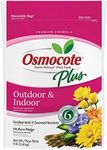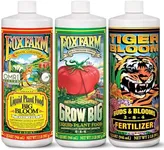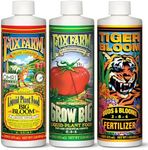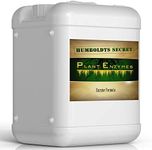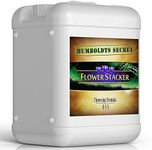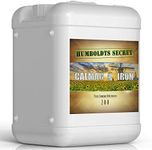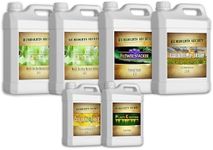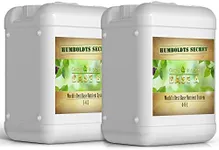Buying Guide for the Best fertilizers
Choosing the right fertilizer for your plants can significantly impact their growth and health. Fertilizers provide essential nutrients that plants need to thrive, and selecting the right one involves understanding your plants' specific needs and the characteristics of different fertilizers. Here are some key specifications to consider when choosing a fertilizer, along with explanations to help you make an informed decision.NPK RatioThe NPK ratio represents the percentage of Nitrogen (N), Phosphorus (P), and Potassium (K) in the fertilizer. These are the primary nutrients that plants need. Nitrogen promotes leafy growth, Phosphorus supports root development and flowering, and Potassium enhances overall plant health and disease resistance. For leafy vegetables, a higher nitrogen content is beneficial, while flowering plants and root crops may require more phosphorus and potassium. Understanding the specific needs of your plants will guide you in choosing the right NPK ratio.
Type of FertilizerFertilizers come in various forms, including granular, liquid, and slow-release. Granular fertilizers are easy to apply and provide nutrients over time, making them suitable for general garden use. Liquid fertilizers are quickly absorbed by plants and are ideal for a rapid nutrient boost. Slow-release fertilizers gradually release nutrients over several months, reducing the need for frequent applications. Consider the convenience and specific needs of your plants when choosing the type of fertilizer.
Organic vs. SyntheticOrganic fertilizers are made from natural materials like compost, manure, and bone meal, and they improve soil health over time. Synthetic fertilizers are chemically manufactured and provide immediate nutrient availability. Organic fertilizers are ideal for sustainable gardening and improving soil structure, while synthetic fertilizers are useful for quick nutrient fixes. Your preference for natural gardening practices or the need for immediate results will influence your choice between organic and synthetic fertilizers.
MicronutrientsIn addition to the primary nutrients (NPK), plants also need micronutrients like iron, manganese, zinc, copper, and boron in smaller amounts. These micronutrients are essential for various physiological functions in plants. Some fertilizers include these micronutrients, which can be beneficial if your soil is deficient in them. Soil testing can help determine if you need a fertilizer with added micronutrients.
Soil pH CompatibilitySoil pH affects nutrient availability to plants. Some fertilizers are formulated to adjust soil pH, making nutrients more accessible. For example, lime-based fertilizers can raise soil pH, while sulfur-based fertilizers can lower it. Knowing your soil's pH and the pH preference of your plants will help you choose a fertilizer that supports optimal nutrient uptake.
Application MethodDifferent fertilizers have different application methods, such as broadcasting, side-dressing, foliar feeding, or fertigation. Broadcasting involves spreading fertilizer evenly over the soil surface, while side-dressing places it near the plant roots. Foliar feeding involves spraying liquid fertilizer directly onto plant leaves, and fertigation mixes fertilizer with irrigation water. The best method depends on your garden setup and the specific needs of your plants.

